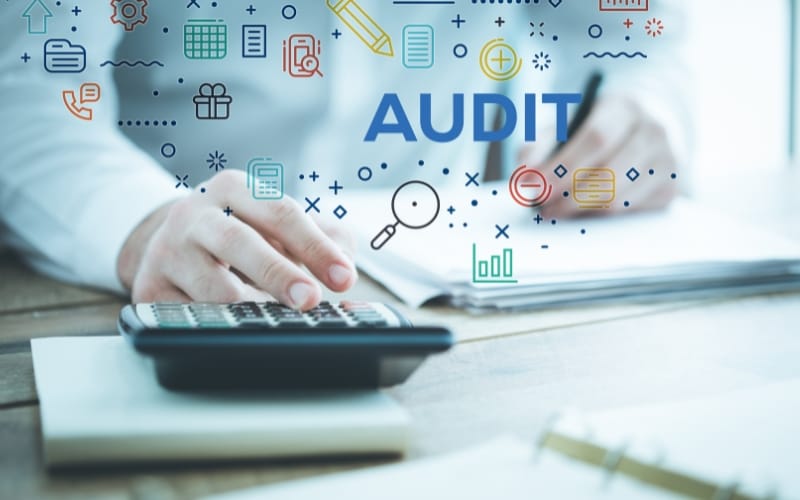In today’s fast-paced and complex business environment, organizational success hinges not only on strategy and operations but on the quality and consistency of leadership. While many companies focus on external metrics and financial KPIs, they often overlook a vital internal driver of performance: culture. A leadership culture audit offers a structured approach to evaluating how leadership behavior, values, and influence shape an organization’s culture. By focusing on this critical area, companies can identify cultural gaps, align leadership practices with strategic goals, and foster an environment that promotes innovation, trust, and long-term growth. This article explores JRG’s comprehensive framework for conducting a leadership culture audit and how it can enhance organizational performance, especially when paired with executive-level insights through an executive culture assessment.
Understanding the Importance of a Leadership Culture Audit

In today’s competitive business landscape, culture is not just a buzzword — it’s a performance driver. A leadership culture audit is a strategic process that evaluates how leadership behaviors, values, and decision-making practices align with the organization’s stated mission and cultural expectations. Unlike general culture reviews, which may assess overall employee sentiment or team dynamics, a leadership culture audit focuses specifically on those at the top — the individuals shaping the tone and direction of the organization.
Why does this matter? Because leaders define culture through action. If there’s a disconnect between what leaders say and what they actually do, it can result in confusion, low engagement, and missed business goals. A leadership culture audit helps uncover such misalignments, allowing organizations to recalibrate leadership styles, communication patterns, and cultural modeling to improve clarity and consistency throughout the organization.
Moreover, conducting a leadership culture audit is a proactive approach to ensuring your leadership team is not just managing people but inspiring them. This audit provides actionable insights into how leadership values are being perceived, which behaviors are being rewarded, and whether those align with desired outcomes like innovation, inclusivity, and accountability.
Complementing this process is the executive culture assessment, which dives even deeper. While the leadership culture audit analyzes the broader impact of leadership culture, the executive culture assessment focuses specifically on the top-tier leadership — CEOs, VPs, and senior executives. It assesses whether these individuals embody the culture they aim to create and if they are equipped to lead cultural transformation.
Together, a leadership culture audit and an executive culture assessment provide a comprehensive view of leadership influence within an organization. They highlight whether strategic goals are supported by leadership behaviors and offer a roadmap for development and realignment where necessary.
Core Components of JRG’s Leadership Culture Audit Framework

JRG’s leadership culture audit framework is a structured, multi-phase process designed to uncover the true impact of leadership behavior on organizational culture. It goes beyond surface-level evaluations and dives into the root causes of cultural misalignment, providing organizations with a practical roadmap for transformation. Each component in this framework plays a crucial role in assessing how leadership contributes to — or detracts from — a thriving workplace culture.
The first core component is values alignment. This stage of the leadership culture audit examines whether leaders genuinely embody the core values of the organization. It’s not just about mission statements or posters on the wall — it’s about actions. Do executives live the values they promote? Do their decisions reflect integrity, transparency, and accountability? If gaps are found here, the audit initiates corrective strategies to bridge the misalignment.
The second component involves behavioral metrics and feedback loops. JRG’s approach uses qualitative and quantitative data — from 360-degree feedback to observational studies — to identify behavior patterns among leadership. This allows the leadership culture audit to spotlight both strengths and blind spots in leadership performance. By understanding how these behaviors affect employee morale and engagement, organizations can take targeted action.
Next, the leadership communication audit focuses on how effectively leaders communicate vision, change, and expectations. Miscommunication or lack of transparency is often a leading cause of cultural erosion. This component ensures that leadership messaging is consistent, clear, and culturally resonant.
Another crucial element is trust indicators. Trust is the foundation of any strong culture. This part of the leadership culture audit evaluates whether leaders have built a trustworthy environment through fairness, follow-through, and vulnerability. High-trust cultures consistently outperform those where skepticism or fear dominates.
Finally, the executive culture assessment runs in parallel with the broader audit, offering a closer look at the executive team’s individual and collective cultural impact. While the leadership culture audit provides a wide-angle view, the executive culture assessment zooms in, enabling deeper insights and tailored coaching interventions.
Together, these components make JRG’s leadership culture audit framework a powerful tool for organizations aiming to align leadership with strategy, strengthen culture, and drive performance from the top down.
How Executive Culture Assessment Enhances Leadership Audits

A successful leadership culture audit provides a powerful lens into how leadership practices shape organizational culture. However, to gain a truly comprehensive understanding of cultural dynamics, it is essential to zoom in on the very top layer of leadership — the executive tier. This is where the culture assessment plays a vital role, serving as a deep dive into the mindset, behaviors, and alignment of senior leaders with the organization’s cultural values and goals.
While a leadership culture audit examines patterns across the leadership spectrum — from middle managers to department heads — the executive culture assessment focuses on those in the most influential positions: the CEO, executive board, and senior leadership team. These individuals set the tone for the entire organization, and even subtle inconsistencies in their behavior can have a cascading effect on culture, trust, and performance.
By integrating executive culture assessment into the leadership culture audit process, organizations can strengthen the audit’s accuracy and depth. For example, the audit might reveal a disconnect between stated company values and observed behavior at the team level. The executive culture assessment can then investigate whether this disconnect originates from executive behavior, unclear strategic communication, or a misalignment in expectations at the top.
Additionally, the culture assessment enhances leadership audits by identifying cultural strengths and weaknesses that may not be visible in broader leadership layers. It helps determine whether executives are modeling behaviors that promote psychological safety, innovation, inclusivity, and strategic agility. If they are not, the leadership culture audit will reflect those gaps in overall cultural health.
Another key advantage of combining both tools is the creation of a targeted development plan. Insights from the executive culture assessment allow for highly tailored executive coaching, succession planning, and board development strategies that directly address issues surfaced in the leadership culture audit.
To see how our leadership audit solutions have transformed organizations across industries, visit our Executive Search Services page. At JRG Partners, we specialize not only in identifying top executive talent but also in aligning leadership strategies with cultural goals — a critical extension of the leadership culture audit process.
Implementing Actionable Changes Post-Audit

Completing a leadership culture audit is only the beginning of cultural transformation. The true value lies in how organizations use the audit results to implement strategic, measurable changes. Without clear follow-through, even the most insightful assessments can fall flat. That’s why the post-audit phase is critical — it’s where insights evolve into impactful actions that reshape leadership behaviors, rebuild trust, and realign cultural values.
Once a leadership culture audit identifies strengths and gaps within the leadership structure, the next step is to design and execute targeted development initiatives. This may include leadership training programs focused on emotional intelligence, strategic thinking, inclusive leadership, or ethical decision-making. These programs should directly address the issues revealed during the audit to ensure relevance and effectiveness.
A strong feedback system is also essential in the post-audit phase. Gathering ongoing feedback from team members helps monitor whether changes are being noticed, appreciated, and internalized. The leadership culture audit findings should guide how and where feedback loops are implemented, ensuring continuous learning and transparency across leadership levels.
Another crucial area is accountability. The leadership audit should lead to the creation of KPIs (Key Performance Indicators) tied to leadership behaviors and cultural alignment. Leaders must be held accountable not only for business outcomes but also for how they embody and promote the organization’s core values. This may involve regular check-ins, scorecards, or peer evaluations to ensure consistency in cultural leadership.
In parallel, insights from the culture assessment are invaluable in driving change at the highest level. Since the executive team serves as the cultural model for the rest of the organization, any misalignment or behavioral gaps identified must be addressed swiftly. Tailored executive coaching, board alignment sessions, or restructuring decision-making processes may be required to reinforce desired cultural shifts.
Together, the leadership audit and executive culture assessment provide the blueprint and tools for cultural change. When organizations take deliberate action based on these insights, they not only enhance leadership effectiveness but also build a more engaged, trust-driven, and high-performing culture.
Measuring the Long-Term Impact on Organizational Performance

The true value of a leadership culture audit lies not only in identifying cultural misalignments but in how those insights translate into long-term business outcomes. While the immediate benefits may include improved clarity, accountability, and morale, the long-term impact can be seen in measurable gains across key performance indicators such as ROI, employee engagement, innovation, and retention.
A well-executed leadership culture audit provides a foundation for building a culture that supports sustained high performance. When leadership behaviors align with organizational values, it creates a consistent and credible work environment. This alignment fosters trust, boosts morale, and enables teams to perform at their best. Over time, organizations that regularly invest in leadership culture audits report higher employee engagement scores, improved customer satisfaction, and reduced turnover rates.
Moreover, when the leadership culture audit is paired with a targeted executive culture assessment, the results are even more impactful. The culture assessment focuses specifically on the executive team’s role in modeling and reinforcing desired cultural traits. Since culture flows from the top, executives who lead with clarity, integrity, and authenticity set the tone for the entire organization. This top-down influence significantly shapes how change initiatives are received and how quickly they can be adopted.
From a financial standpoint, organizations that conduct regular leadership culture audits and executive culture assessments are better positioned to measure the ROI of leadership development initiatives. These tools enable organizations to track changes in leadership behavior over time and correlate them with improvements in strategic execution, innovation, and employee satisfaction. For example, a company that improves leadership trust scores post-audit may also see a spike in productivity and a decrease in attrition — both strong indicators of performance gains.
Additionally, innovation often thrives in cultures where leadership supports autonomy, encourages risk-taking, and rewards initiative. A leadership culture audit can reveal whether such cultural traits are present and whether leaders are actively fostering them. The executive culture assessment further ensures that innovation is not just encouraged rhetorically but modeled at the highest levels.
Conclusion
To further understand how leadership culture influences business success, it’s valuable to explore global best practices and case studies. According to a detailed report by McKinsey & Company, companies with strong, aligned leadership cultures are 1.5 times more likely to experience above-average revenue growth. Their article, “The hidden value of organizational health—and how to capture it”, offers insights into how cultural alignment, leadership behavior, and strategic clarity drive performance. Integrating these insights with a tailored leadership culture audit can significantly amplify organizational outcomes.
A leadership culture audit is more than a diagnostic exercise — it’s a strategic investment in the future of an organization. By identifying cultural misalignments, reinforcing leadership accountability, and providing a roadmap for behavioral change, this process empowers companies to build resilient, values-driven leadership at every level. When supported by an in-depth executive culture assessment, the audit becomes a transformative tool that drives cultural clarity, business agility, and sustained success. As organizations continue to evolve, those who prioritize and measure their leadership culture will stand out as adaptive, high-performing, and purpose-driven leaders in their industries.


